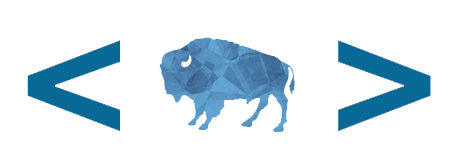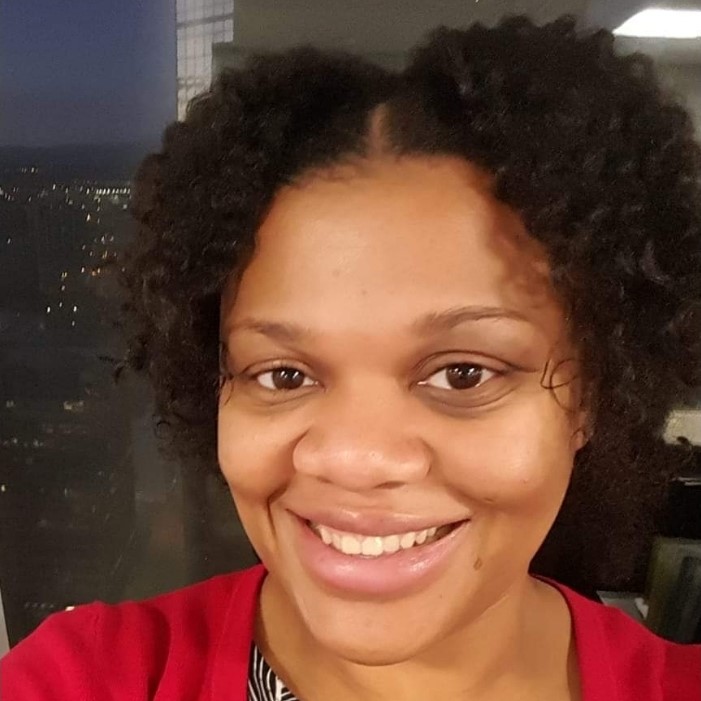As I wrap up my first cross-training experience ever with the Office of Natural Resources Revenue’s (ONRR) Open Data, Design, & Development (ODDD) team, I reflect on my time with the team and share key takeaways from this experience. I am currently a Systems Accountant with the ONRR Financial Systems team under Infrastructure and Digital Services (IDS). I serve as a technical resource for ONRR’s financial system where I primarily support the Accounts Receivable/Billing Team and ONRR’s IT Services support contractor.
Interest and hearsay
My initial interest in the ODDD team began when it formed a few years ago. I always wondered what exactly they did. As time went on, I began to hear little chatter of what others thought they did like “They publish/display data to NRRD (the Natural Resources Revenue Data website), hence their name, Duh! – Data Display team.” (Note: The team was formerly called the Data Display team.) Hearing things like that made me more interested since I had a feeling there was much more to the team than most thought.
So, when the ODDD team’s cross training opportunity was announced with the headline of “It is with great excitement that I announce a new Job Rotation Opportunity – Working with the ODDD team!!!” My excitement, as well as questions and thoughts, began to flood my mind before I decided to apply. “Will I like doing this work?” “Will I fit in?” “Will I need to apply any of my systems skills to what they do?” “How can I add value to the ODDD team, the Systems Teams and myself by doing this cross training?” “Will I overwhelm myself by taking on another job and doing double duty?” “Will I fall behind in my normal financial system duties?” Nonetheless, I decided to move those questions to the back of my mind and go for it.
Applying and Pre-onboarding
Since I am slightly under the Information Technology (IT) umbrella of ONRR, I decided I wanted to gain a better understanding of digital services (cloud-based software, website development, user research, etc.) vs IT, what the differences were, and how things could look in the future for these two areas of ONRR. I was in for a treat because as time went on, I quickly learned what all the ODDD team does. We’ll get to that a bit later.
My next step was to submit my application materials that included a questionnaire/application from ONRR’s Workforce Development Office (WDO), my resume, and written approval from my manager. These materials had to be reviewed by a panel that consisted of a WDO representative(s) and the ODDD team Manager, Maroya. Shortly thereafter, I was notified of my selection and provided with two start date options of when I could begin the cross training.
Once selected, I began working with the IT help desk to begin installation of software and applications used by the ODDD team. Ironically, I heard of some of the software but never had the opportunity to work with GitHub, Atom, and ZenHub. I was eager to learn. I also remember one of the IT help desk technicians mentioning how they were starting to work in Atom and that they loved it. Hearing that was even more exciting to me as I love learning new software and technology.
Onboarding and getting started
Before getting started, Maroya and Shannon (the team’s UX Expert and Innovation Specialist) began sending me team meeting invites and an onboarding checklist to set up access, review instructions, user guides, and learning about their products (onrr.gov and NRRD). I am typically the queen of questions. But their instructions, guides, and checklists were all thorough, clear, and concise. It left me with hardly any questions and little to be desired at the time. And the few questions I mostly bothered Shannon with were always promptly responded to.
Shortly after onboarding, I was immediately immersed in the team’s work and processes. I was assigned tasks to complete like any other member of the team and provided statuses to the team until completion. The manager, Maroya, also makes time to meet and check-in with her staff (cross trainers like me included) individually at least once a week. This gives you one on one time where feedback can be provided, assistance on tasks, ask questions, raise concerns, or discuss anything you may need to.
My training experience was not limited to ODDD; there is a lot of cross collaboration with other Information Data Management (IDM – the program the ODDD team is in) teams as well. Maroya and Shannon do a fantastic job of introducing you to everyone else on the team, other teams, or anyone else outside the team in meetings when the chance arises. These small gestures were big to me and made me feel like a valued, full-time member of their team.
Training and Learning
As the training went on, I was provided with great overviews of the team, their mission, the team’s history, and what all they do. They are great teachers and happily share their knowledge. Furthermore, this team is the epitome of an agile team and what efficiency should look like on a team within a government organization. Their use of agile methodology and team lingo was clearly explained as well.
They complete tasks and projects in sprints (a short, time-boxed period when a team works to complete a set amount of work). In other words, they assign tasks, deadlines, and efficiently work towards it. If anyone has an issue with a task during these sprints, there is time set aside to discuss or screen share to show everyone what the problem is. This is a great way to troubleshoot, address, and resolve these items as they arise with the team to get assistance.
Key takeaways
The initial questions and concerns mentioned earlier that ran across my mind were answered and quickly faded during my cross training. I gained a better understanding of the ODDD team’s mission and how it relates to ONRR’s mission. I was able to see sneak peaks of what’s to come for onrr.gov and the new content management system.
I was assigned tasks to work on that allowed me to work with other ONRR employees to make updates to the onrr.gov site and see how it all works. Additionally, I saw how a Federal public website should be visually designed, managed, and how to ensure documents on the site were accessible and 508 compliant.
I had the pleasure of sitting in user research interviews (for NRRD) along with the team’s bright interns to listen and receive user feedback for NRRD. I learned about the team’s focus of user centered design and development, open data, how to conduct a usability study, accessibility checks for documents, and providing continuous improvement for ONRR’s public web presence in managing the NRRD portal and onrr.gov.
This team is comprised of 6-7 individuals who mostly have different job titles, varying duties, varied skill sets, and experiences. They all effortlessly and cohesively work together in a collaborative, efficient manner where they become a force to be reckoned with. They provide ONRR employees, ONRR stakeholders, and other external users of ONRR’s public sites with amazing end products.
Most users interact with their products regularly but have no idea about the amazing people that are behind the scenes and the hard work they do daily to keep ONRR’s public facing websites accessible, error and broken-link free, user-centered, open, accurate, 508 compliant, well managed, and top notch when it comes to visual design. If you ever wonder what goes into what I previously mentioned as well as website design, web content management, ensuring compliance and data accuracy, and keeping things current then look no further than ONRR’s ODDD team.
This has been one of the best, warmest, and innovative teams I have had the pleasure of working with over my Federal career. From the application process with ONRR’s Workforce Development Office to regular meetings with this team, working on tasks, attending IDM staff meetings, and meetings with ONRR’s Director and Deputy Director on visual design for onrr.gov has been an experience I will never forget.
If you are considering cross training or doing a job rotation, then what are you waiting for? I strongly encourage anyone who is considering cross training to go for it. Explore your professional interests, get out of your silo, learn new skills and software, learn new ways of doing things, meet new people, and grow both personally and professionally. Don’t forget to have fun while doing it like I did with my cross-training experience.
 Open Data, Design, & Development at the Office of Natural Resources Revenue
Open Data, Design, & Development at the Office of Natural Resources Revenue